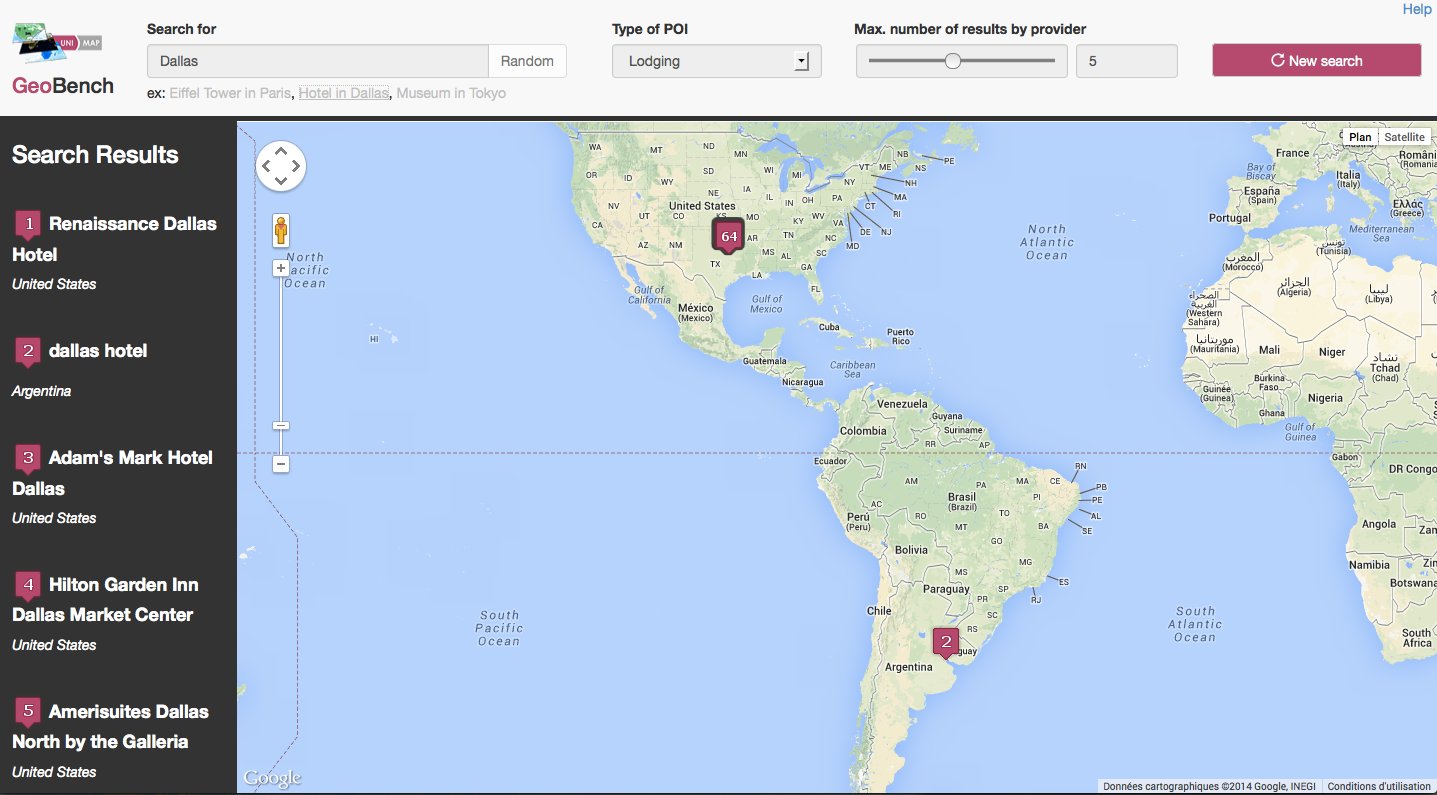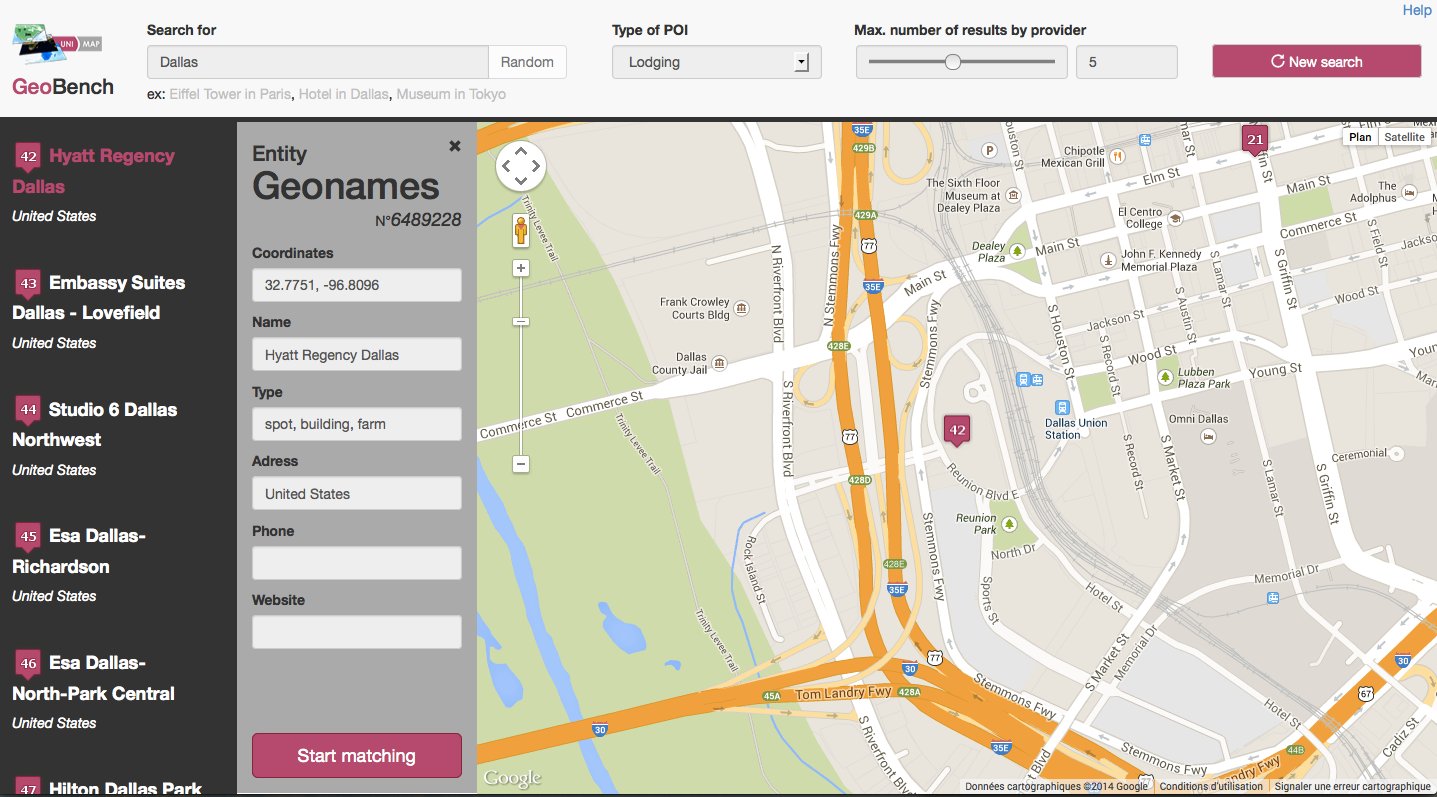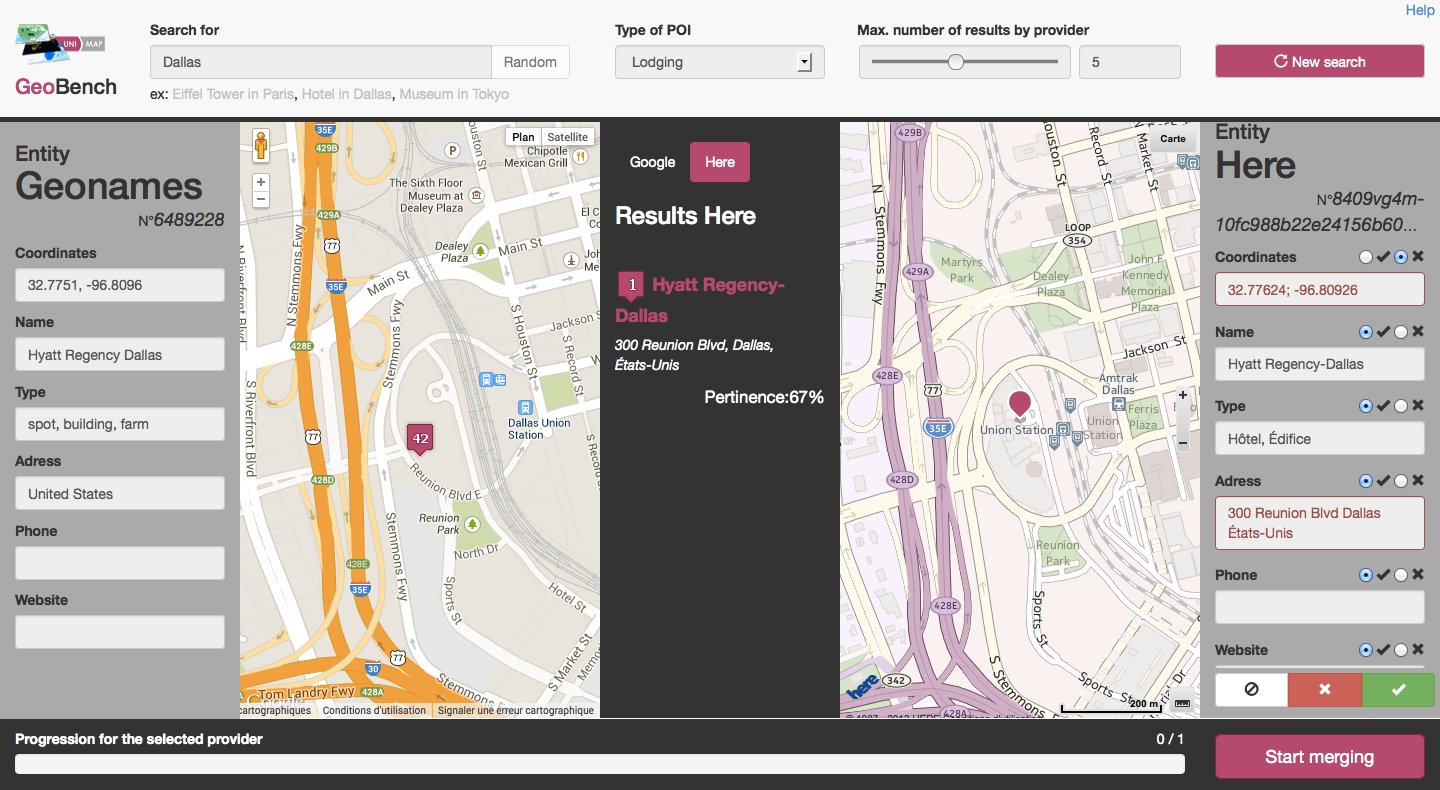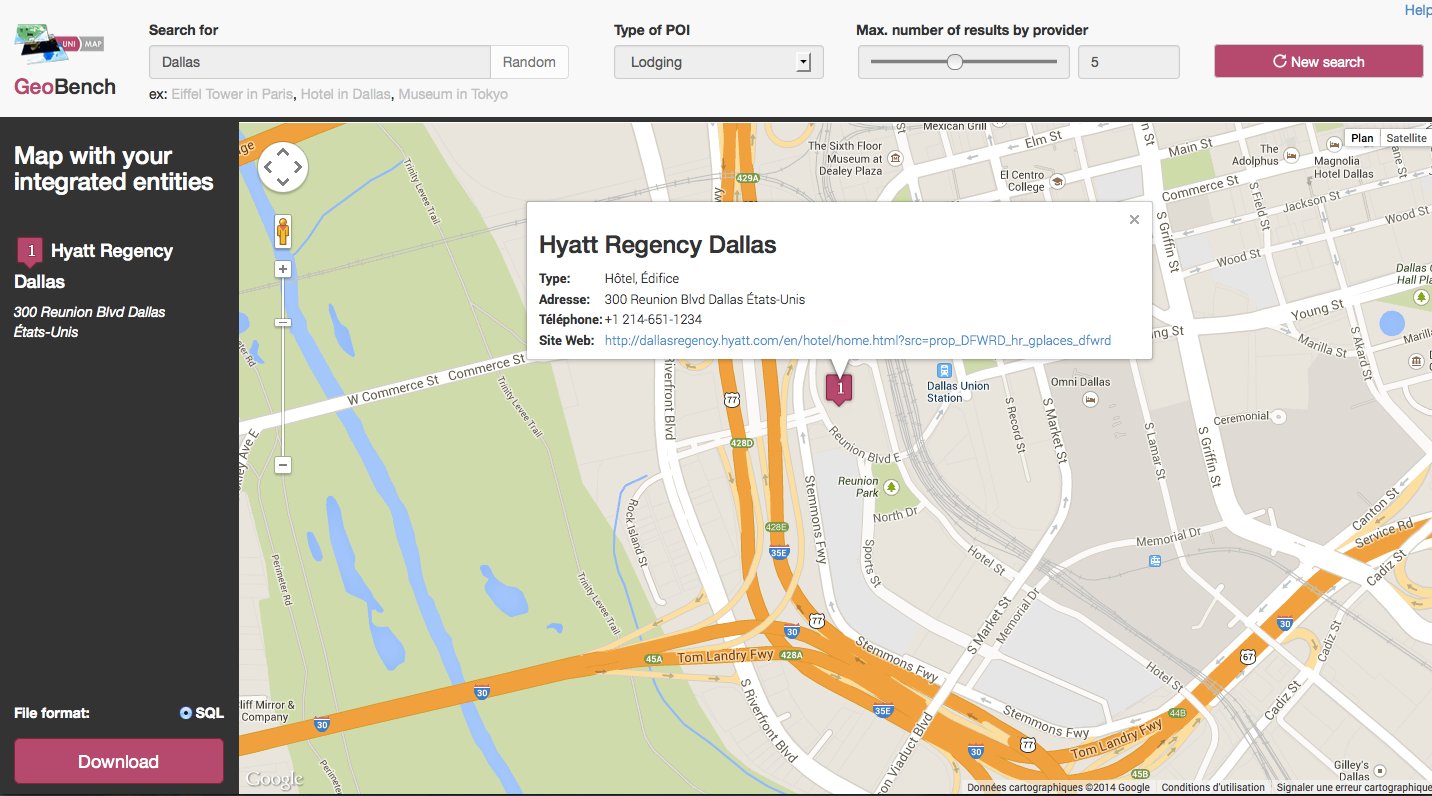GeoBench is a tool which aims at helping data integration researchers building spatial entity matching benchmarks. The main features of GeoBench is the discovery and the integration of corresponding spatial entities between different cartographic providers (currently Geonames, Here and Google Maps). It can also be used by end-users to build a customized map with complete information about their favourite restaurants, hotels, etc.
If you use GeoBench, please cite this paper:
1. Contact information
GeoBench has been developed in the context of the UNIMAP project (Integration of Location-based Services for Generating a Unified Map).- DUCHATEAU Fabien (LIRIS / Université Lyon 1, France)
- Mail:

- Website: http://liris.cnrs.fr/~fduchate/
- BERJAWI Bilal (LIRIS, France)
- Mail:

2. Demonstration video
Following is a tutorial video for demonstrating GeoBench's features. It mainly presents a use case for end-users interested in finding complete information about hotels and restaurants in Dallas.
You can also download the SQL file related to this video tutorial.
3. A use case step by step
GeoBench is useful for researchers in data integration for constructing spatial entity matching benchmarks, but we have chosen to present a scenario interesting for end-users, namely the generation of a customized and complete map. Currently, we consider one provider as the source (Geonames, the largest database of place names), on which users select a source entity. Next, GeoBench discovers, for the source entity, the corresponding entities on the target providers. We currently offer two target providers (Google Maps and Here).

Zoey plans to travel to Dallas, Texas. To obtain complete and accurate information about the hotels in Dallas, she uses GeoBench. She queries for "Dallas" with POI type equal to "lodging". The maximum number of results by provider is set to 5 because Zoey is confident in the quality of the tool. The first suggestion on Geonames is "Hyatt Regency Hotel", which is conveniently located for Zoey. However, the source provider does not specify the phone number and the address for this hotel.

GeoBench runs the matching process and it first suggests potentially corresponding entities for the provider Here. Zoey quickly confirms that the single proposed entity (with a confidence score at 67%) corresponds to the POI "Hyatt Regency Hotel". Note that the differences between the Geonames entity and the Here entity are also computed, but they are not interesting in this scenario. Zoey validates this entity as the corresponding one for the Here provider. Luckily, she now knows the address because it is provided by Here. But Zoey still does not have the phone number of the hotel.

She runs the matching for the Google Maps provider and GeoBench displays one entity with a confidence score at 48%. Although this score is not high, the proposed entity is the one for "Hyatt Regency Hotel" and it includes the phone number and the website.

She can now start the merging process to integrate all information from the three providers into a single complete entity. GeoBench lets Zoey decide which values should be included in the integrated entity, but it facilitates the choice by preselecting values.

Once the merging step is done, GeoBench displays the integrated entity on a map (currently using Google Maps). Zoey can repeat the process for adding more locations (e.g., other hotels, restaurants) to obtain a customized map with her favorite places. Note that for benchmark constructions, the results of the integration is available as a SQL script too.

4. Acknowledgements and credits
Main developers of GeoBench
- MOREL Thomas (Université Lyon 1, France)
- MORANA Anthony (Université Lyon 1, France)